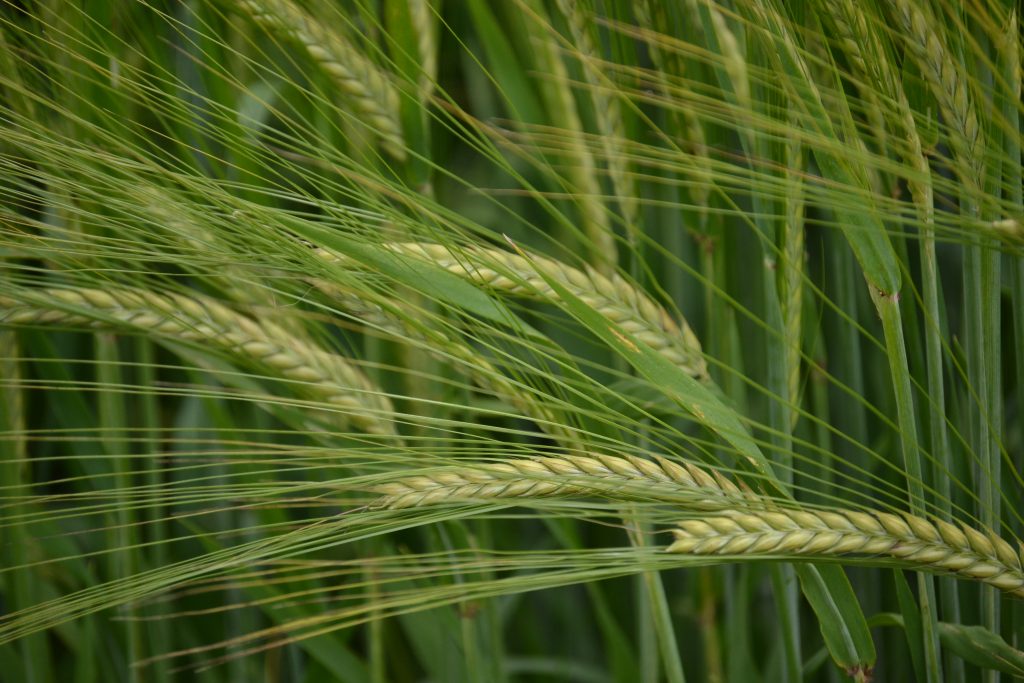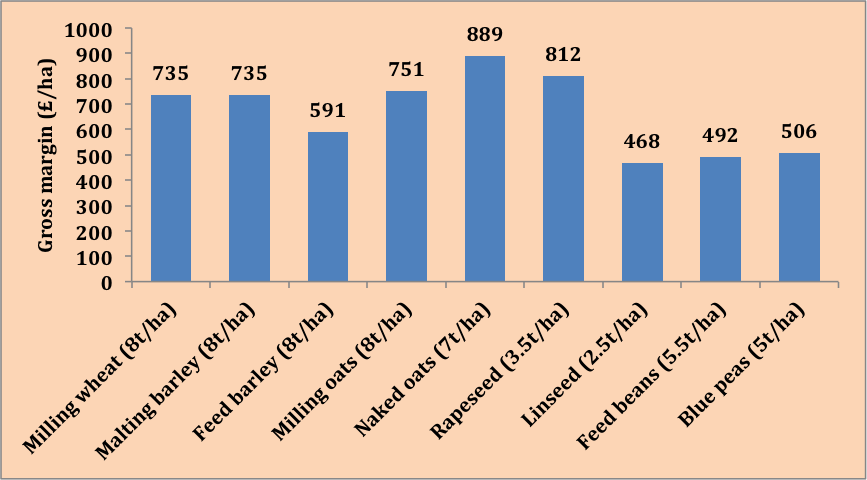2018 budgets show relative spring cropping value and risk
15th November 2017
Spring crops are set to be as profitable as most winter plantings other than wheat and oilseed rape in 2018 according to the latest Agrii crop budgeting figures unveiled at a special briefing at Bishop Burton College this month.

RGT Planet
Spring crops are set to be as profitable as most winter plantings other than wheat and oilseed rape in 2018 according to the latest Agrii crop budgeting figures unveiled at a special briefing at Bishop Burton College this month. And, contrary to popular wisdom, with no greater risk.
Based on current crop values and input costs, the budgets show naked oats continue to offer the best margin prospects, followed by spring rape, milling oats, milling wheat and malting barley. Feed barley is again likely to generate the poorest spring cereal margins, although significantly ahead of beans, peas or linseed (see Figure1).
Figure 1: 2018 Spring Cropping Profitability (Agrii Budgeting Forecast)
“As ever, gross margins are all about yields,” stressed Agrii farm management consultant, Paul Pickford responsible for the budgets. “If they yield well, our figures show spring crops are likely to deliver gross margins not far short of reasonably performing winter wheats and OSRs.
“This is underlined by the latest three years of actual field-by-field margin data from our Maximising Arable Performance (MAP) benchmarking group showing spring wheat, barley and oats generally outperforming all but winter wheat and OSR.
“Interestingly too,” he added, “the MAP data show the range in the average yield of key spring crops over the years is less than that of the winter staples, suggesting they may also carry less growing risk than often assumed.”
Paul Pickford’s assessment of the financial risk of different crops also comes down in favour of spring crops, in general, and best potential margin earners, in particular. His calculated variable cost:gross margin ratios for the best-performing spring oats and rapeseed are, for instance, 1:2.5 or more. The best-performing spring malting barleys come in at just under 1:2.0 and spring wheats at 1:1.5 or so – on a par with winter wheats and rapes.
“Our forecast margins for 2018 are slightly higher than they were for last season due to marginally improved crop values,” he noted. “But when considering risk growers need to take into account the supply and demand position of the various crop markets; especially so as the highest potential spring cereal margins come from milling or malting crops.
“As well as pushing the traditional £10/t wheat to barley discount to nearer £20/t, increasing national production resulting from the expanding spring barley acreage could well put growing pressure on malting premiums. Strictly limited markets for both naked and milling oats must also be factored into the equation. As must the effect of large Group 1 winter wheat plantings on milling premiums and the availability of human food export opportunities for pulses.
“Under these circumstances, I would strongly advise growers to make the most of futures markets and contracts to lock-into prices and specific markets as part of their 2018 spring cropping strategy. While the margins prospects for spring cropping look reasonable at the moment, we know how rapidly markets can change. And these tools allow this area of risk, at least, to be reasonably managed.”

